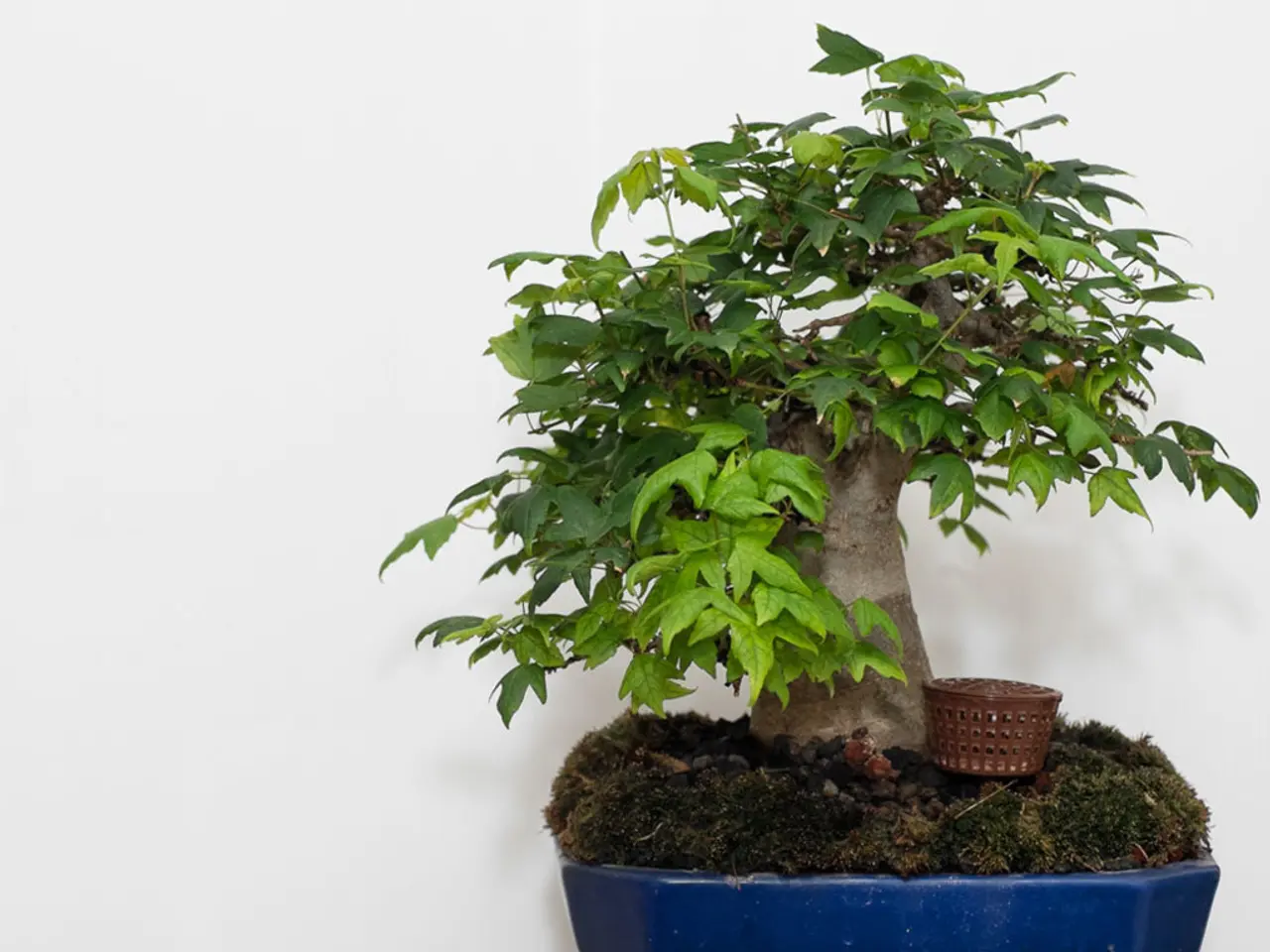Modifying Climate for Bonsai Cultivation: Customizing Care to Suit Different Settings
In the harmonious world of bonsai, nurturing these miniature trees involves attuning to the subtleties of their environment, embracing the rhythms of light, temperature, humidity, and season. This guide offers insights into the ideal environmental conditions for popular bonsai species, whether grown indoors or outdoors.
Common Bonsai Species and Their Ideal Conditions
Bonsai enthusiasts have a variety of options, each with unique characteristics and preferences. From the delicate Japanese Maple to the rugged Trident Maple, the hardy Chinese Elm, and the popular conifers like the Juniper and Japanese White Pine, each species requires specific environmental conditions. For instance, Ficus is ideal for indoor bonsai due to its tolerance of lower light and stable indoor conditions, while Azalea and Bougainvillea are better suited to warmer climates for their flowering displays.
Ideal Environmental Conditions for Indoor and Outdoor Bonsai
The environmental needs of bonsai trees differ significantly between indoor and outdoor settings. Indoor spaces offer control over temperature, humidity, and light levels but may lack natural light and air circulation. Outdoor bonsai, on the other hand, thrive under the sun's rays and natural ventilation but are exposed to unpredictable weather conditions, pests, and diseases.
Light: Indoor bonsai species like Ficus prefer bright, indirect light, while some may tolerate morning sun indoors. Outdoor bonsai, such as maples, appreciate morning sun and dappled afternoon shade, with full sun for junipers and pines.
Temperature: Indoor bonsai require stable room temperatures, avoiding extremes, typically between 15–24°C (59–75°F). Outdoor species' temperature preferences vary, with Japanese/maples preferring temperate, not hot, conditions, while junipers and pines tolerate wider ranges.
Humidity: Indoor humidity should be moderate to high (40-70%), and humidity trays or humidifiers can help maintain ideal conditions if it's dry. Outdoor humidity varies naturally, but avoiding excessive humidity (>80%) helps prevent fungal disease.
Ventilation: Good air circulation is crucial indoors to prevent fungal growth and overheating. Outdoor natural ventilation generally suffices, but avoiding stagnant air, especially in humid weather, is essential.
Species-Specific Highlights
Each species requires specific care to thrive. For example, the Japanese Maple prefers temperate outdoor climates with consistent moisture but not soggy roots, while the Trident Maple requires regular watering in summer. The Chinese Elm is adaptable and a popular choice for beginners, while junipers and pines appreciate full sun and good air circulation. Ficus, on the other hand, is best indoors with bright indirect light and stable warmth.
Key Environmental Notes
- Ventilation is essential, especially indoors, to prevent fungal diseases caused by high humidity (>70-80%) and to promote strong stem growth by circulating air.
- Humidity control inside prevents fungal infections; keeping relative humidity below 70% indoors is ideal.
- High temperatures indoors can cause faster water loss, higher disease risk, and impaired photosynthesis; good ventilation, fans, and temperature control help mitigate these issues.
- Outdoors, bonsai species often thrive with natural air circulation but should be protected from extreme conditions like midday full sun for shade-preferring trees (e.g., Japanese Maple).
Cultivating a bonsai from a cutting can be challenging, as not all species respond equally to propagation from cuttings. Seeds are often a more reliable starting point for beginners. The art of bonsai climate control is a poignant reminder of the interconnectedness of life, where gentle adjustments and nuanced understanding yield a symphony of serenity.
To maintain a healthy bonsai, regular inspections for pest infestations, such as spider mites and mealybugs, are essential. Signs of root rot include soft, mushy roots, blackened or rotten roots, and a soft, spongy trunk. Treatment involves repotting with fresh, well-draining soil and pruning affected roots.
When it comes to soil, using regular potting soil for bonsai trees can lead to unhappy roots due to a lack of drainage and aeration. Repotting a bonsai every 2-5 years is typically sufficient, but the frequency may vary depending on the species' growth rate and root bound status. Bonsai enthusiasts must consider both indoor and outdoor spaces when cultivating their trees.
Outdoor gardens provide an abundance of natural light and fresh air but expose bonsai to unpredictable weather conditions, pests, and diseases. Creating a bonsai from a cutting can be challenging, as not all species respond equally to propagation from cuttings. Seeds are often a more reliable starting point for beginners.
In summary, bonsai trees generally require specific light levels (often morning sun and shade), moderate temperatures appropriate to their species, controlled humidity (especially indoors), and good ventilation to maintain health and development. Species like Japanese Maple and Chinese Elm are popular for temperate outdoor growing, while Ficus suits indoor environments better. Conifers like juniper and pine appreciate sunny outdoor conditions and strong airflow.
- Bonsai enthusiasts looking to grow Ficus, a popular indoor species, should provide it with bright, indirect light, a moderate-to-high humidity environment, and stable room temperatures, typically ranging between 15–24°C (59–75°F).
- For outdoor growing, environmental-science enthusiasts interested in gardening might choose the Japanese Maple or the Chinese Elm, as these species thrive in temperate conditions with consistent moisture but not soggy roots, and require good air circulation similar to those found in home-and-garden settings.




